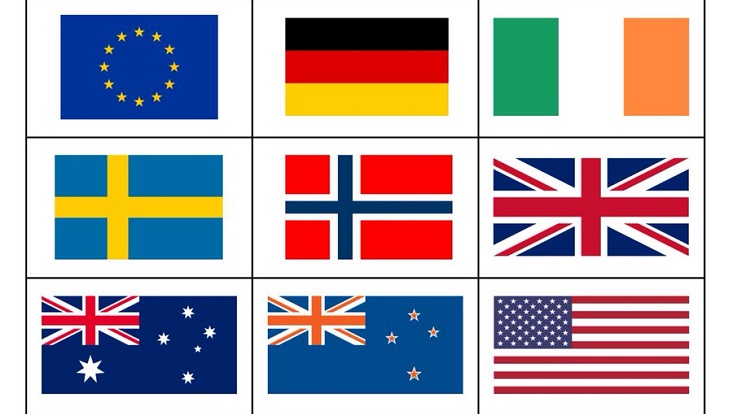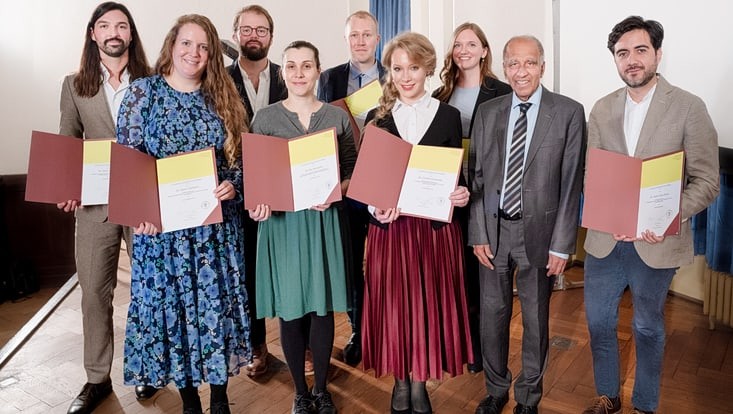and Society (CLICCS)
CO2 Removal as a Political Challenge: One Goal, Many Approaches
18 March 2021, by Meike Lohkamp

Photo: UHH/ Schenuit
According to the Intergovernmental Panel on Climate Change (IPCC), without the active removal of carbon dioxide from the atmosphere, it won’t be possible to limit global warming to 1.5 degrees Celsius. Consequently, CO2 removal is becoming increasingly important in climate policy. Here, different countries are pursuing various approaches, as a new study from CLICCS researcher Felix Schenuit and his team shows.
“Whether and how various countries are currently integrating CO2 removal into their climate policies offers us valuable insights for assessing possible and plausible future developments and applications,” says Felix Schenuit. Schenuit is a political scientist at Universität Hamburg’s Cluster of Excellence Climate, Climatic Change, and Society (CLICCS), where he is investigating the role of CO2 removal in political decision-making.
Since the Paris Agreement from 2015 and the IPCC Special Report on global warming, net zero emissions has become the most important goal in climate politics. To limit global warming to 1.5 degrees Celsius, it’s not enough to implement climate protection measures based on reducing emissions. To balance out the unavoidable remaining emissions, further measures for removing CO2 from the atmosphere will be necessary – such as afforestation or direct separation of carbon dioxide from the surrounding air. By doing so, the goal is to achieve a balance between the emissions produced and those removed from the atmosphere – net zero.
As part of an international, interdisciplinary team, Schenuit has for the first time investigated current trends in the CO2 removal policies of nine members of the Organisation for Economic Cooperation and Development (OECD). To do so, the researchers examined e.g. how countries account for CO2 removal in their climate protection targets, and whether removal and reduction of emissions are freely interchangeable. Furthermore, they investigated whether countries focus on ecosystem-based methods of CO2 removal, like afforestation, or instead concentrate on geochemical methods such as separating CO2 from the surrounding air and then storing it underground.
Schenuit and his team found that the approaches of the European Union, Ireland, Germany, Sweden, Norway, the United Kingdom, Australia, New Zealand and the United States vary widely. They can be divided into three ideal types: incremental modification, early integration and proactive policy entrepreneurship.
In incremental modification, the active removal of carbon dioxide from the atmosphere is only integrated into climate policy gradually. This is the case e.g. in Germany. In contrast, in early integration, CO2 removal was included in the national climate policy long before the Paris Agreement. CO2 removal and reduction are interchangeable factors when it comes to accounting for climate protection targets. Here, countries – New Zealand and Australia, for example – are concentrating on ecosystem-based removal methods. Countries that have taken the proactive entrepreneurship route, on the other hand, plan to implement a broad range of CO2 removal methods, including geochemical methods, to achieve their climate goals. The United Kingdom is a typical example.
“Our investigations show that some countries are undecided, for example, about whether they should account for removal and reduction interchangeably or separately. In the next few years, we can expect to see changes and political debates – in Germany and elsewhere. We’ll continue to monitor and assess them,” says Schenuit.
Article: Schenuit F, Colvin R, Fridah M, McMullin B, Reisinger A, Sanchez DL, Smith SM, Torvanger A, Wreford A, Geden O (2021): Carbon Dioxide Removal Policy in the Making: Assessing Developments in 9 OECD Cases; Front. Clim.


